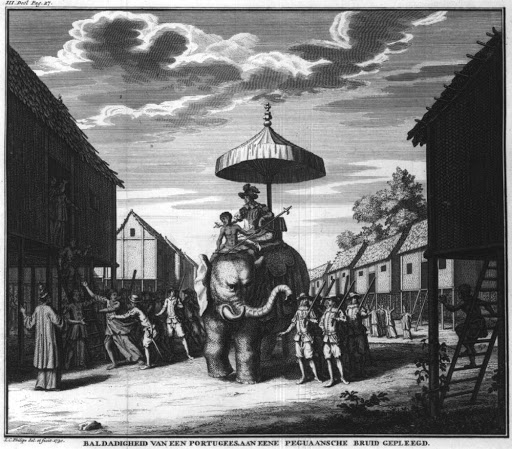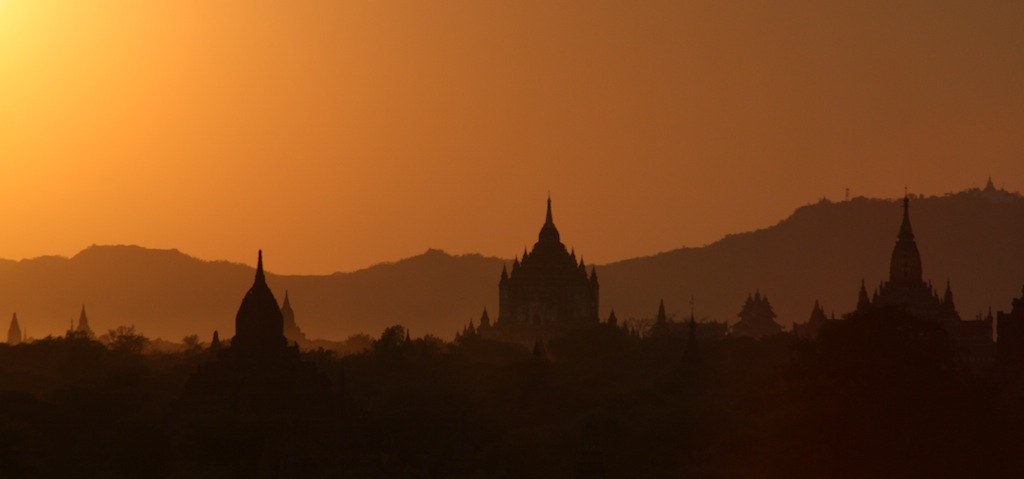|
Four Paladins
The Four Paladins or Heroes () are the four legendary generals in the fellowship of King Anawrahta during the Bagan Dynasty. They are one of the most famous national heroes of Burma and played significant roles in the early tales of the Bagan Empire's expansion. In Burmese legends, each of them is said to be equivalent to the combined might of a legion. Members # Kyansittha (ကျန်စစ်သား) — Paragon of both physical and mental strength # Nga Htwe Yu (ငထွေရူး) — Paragon of agility # Nga Lon Letpe (ငလုံးလက်ဖယ်) — Paragon of might # Nyaung-U Hpi (ညောင်ဦးဖီး) — Paragon of stamina Mission to Pegu The mission to Pegu is the most famous episode in the military career of the paladins. In the early 1070s, the king of Pegu made a distress call to Bagan when his kingdom is invaded by the Yuan- Khmer raiders called Joom''' (ဂျွမ်း) from northern Thailand. King Anawrahta promised that he wo ... [...More Info...] [...Related Items...] OR: [Wikipedia] [Google] [Baidu] |
Bago, Myanmar
Bago (formerly spelled Pegu; , ), formerly known as Hanthawaddy, is a city and the capital of the Bago Region in Myanmar. It is located north-east of Yangon. Etymology The Burmese name Bago (ပဲခူး) is likely derived from the Mon language place name Bagaw (, ). Until the Burmese government renamed English place names throughout the country in 1989, Bago was known as Pegu. Bago was formerly known as Hanthawaddy (; ; ; lit. "she who possesses the sheldrake"), the name of a Burmese-Mon kingdom. An alternative etymology from the 1947 Burmese Encyclopedia derives Bago (ပဲခူး) from Wanpeku () as a shortening of Where the Hinthawan Ducks Graze (). This etymology relies on the non-phonetic Burmese spelling as its main reasoning. History Establishment Various Mon language chronicles report widely divergent foundation dates of Bago, ranging from 573 CE to 1152 CEA version of the 18th century chronicle '' Slapat Rajawan'' as reported by Arthur Phayre ... [...More Info...] [...Related Items...] OR: [Wikipedia] [Google] [Baidu] |
Relics Associated With Buddha
According to the '' Mahāparinibbāṇa Sutta'' ( Sutta 16 of the ''Dīgha Nikāya''), after attaining ''parinirvana'', the body of Buddha was cremated and the ashes divided among his lay followers. Division of the relics According to the ''Mahāparinibbāṇa Sutta'', after his ''parinirvana'' in Kushinagar, the remains of the Buddha were cremated at that location. Originally his ashes were to go only to the Sakya clan, to which the Buddha belonged. However, six other clans and a king demanded the ashes of the Buddha. In order to resolve this dispute, a Brahmin named Drona divided the ashes of the Buddha into eight portions. These portions were distributed as follows: to Ajātasattu, king of Magadha; to the Licchavis of Vesāli; to the Sakyas of Kapilavastu; to the Bulis of Allakappa; to the Koliyas of Rāmagāma; to the Brahmin of Veṭhadīpa; to the Mallas of Pāvā; and to the Mallas of Kusinārā. In addition to these eight portions, two other important r ... [...More Info...] [...Related Items...] OR: [Wikipedia] [Google] [Baidu] |
Manisanda
, image = , caption = , reign = 1084–1112 , coronation = , succession = Queen of the Northern Palace , predecessor = herself , successor = Yadanabon I (as the Chief Queen) , suc-type = Successor , reg-type = King , regent = Kyansittha , reign1 = 1077–1084 , succession1 = Chief queen consort of Burma , predecessor1 = Usaukpan , successor1 = Apeyadana , reg-type1 = King , regent1 = Saw Lu , reign2 = 1070s–1077 , succession2 = Queen of the Northern Palace , predecessor2 = Saw Mon Hla , successor2 = herself , reg-type2 = King , regent2 = Anawrahta Saw Lu , spouse = Anawrahta (1070s–77) Saw Lu (1077–84) Kyansittha (1084–1112) , issue = , issue-link = ... [...More Info...] [...Related Items...] OR: [Wikipedia] [Google] [Baidu] |
Cornell University Press
The Cornell University Press is the university press of Cornell University, an Ivy League university in Ithaca, New York. It is currently housed in Sage House, the former residence of Henry William Sage. It was first established in 1869, making it the first university publishing enterprise in the United States, but was inactive from 1884 to 1930. The press was established in the College of the Mechanic Arts, as mechanical engineering was called in the 19th century, because engineers knew more about running steam-powered printing presses than literature professors. Since its inception, The press has offered work-study financial aid: students with previous training in the printing trades were paid for typesetting and running the presses that printed textbooks, pamphlets, a weekly student journal, and official university publications. Today, the press is one of the country's largest university presses. It produces approximately 150 nonfiction titles each year in various disci ... [...More Info...] [...Related Items...] OR: [Wikipedia] [Google] [Baidu] |
Platoon
A platoon is a Military organization, military unit typically composed of two to four squads, Section (military unit), sections, or patrols. Platoon organization varies depending on the country and the Military branch, branch, but a platoon can be composed of 20–50 troops, although specific platoons may range from 10 to 100 people. A platoon is typically the smallest military unit led by a Officer (armed forces), commissioned officer. The platoon leader is usually a junior officer—a Second lieutenant, second or first lieutenant or an equivalent rank. The officer is usually assisted by a platoon sergeant. Rifle platoons normally consist of a small platoon headquarters and three or four sections (Commonwealth) or squads (United States). In some armies, platoon is used throughout the branches of the army. In a few armies, such as the French Army, a platoon is specifically a cavalry unit, and the infantry use "section" as the equivalent unit. A unit consisting of several platoon ... [...More Info...] [...Related Items...] OR: [Wikipedia] [Google] [Baidu] |
Lower Myanmar
Lower Myanmar (, also called Lower Burma) is a geographic region of Myanmar and includes the low-lying Irrawaddy Delta ( Ayeyarwady, Bago and Yangon Regions), as well as coastal regions of the country ( Rakhine and Mon States and Tanintharyi Region). In the Burmese language, people originating from Upper Myanmar are typically called ''a-nya-tha'' for men and ''a-nya-thu'' for women, whereas those from Lower Myanmar are called ''auk tha'' () for men and ''auk thu'' for women. 100px Green represents Upper Myanmar and Yellow represents Lower Myanmar History The territories of present day Lower Myanmar was part of Pagan Kingdom until the end of 13th century. After the collapse of Pagan Kingdom, the territories become Martaban Hanthawaddy Kingdom founded by King Wareru. From the 16th century to the middle of 18th century, Pagu was a province of Toungoo Dynasty. In 1752, Restored Hanthawaddy Kingdom successfully overthrown Toungoo Dynasty but later conquered by Konbaung Dynasty le ... [...More Info...] [...Related Items...] OR: [Wikipedia] [Google] [Baidu] |
Northern Thailand
Northern Thailand, or more specifically Lanna, is a region of Thailand. It is geographically characterized by several mountain ranges, which continue from the Shan Hills in bordering Myanmar to Laos, and the river valleys that cut through them. Like most of Thailand, it has a tropical savanna climate, but its relatively high elevation and latitude contribute to more pronounced seasonal temperature variation, with cooler winters than the other regions. Historically, northern Thailand has been linked to the Hariphunchai Kingdom, which emerged as a powerful state in the region in the 7th century. This kingdom was related to the Dvaravati that existed from the 6th to 11th centuries. The Hariphunchai culture later influenced the development of the Lanna Kingdom, which emerged in the 13th century and lasted until the 18th century. Geography North Thailand is bound by the Salween River in the west and the Mekong in the east. The basins of rivers Ping, Wang, Yom, and Nan, all ... [...More Info...] [...Related Items...] OR: [Wikipedia] [Google] [Baidu] |
Khmer Empire
The Khmer Empire was an empire in Southeast Asia, centered on Hydraulic empire, hydraulic cities in what is now northern Cambodia. Known as Kambuja (; ) by its inhabitants, it grew out of the former civilization of Chenla and lasted from 802 to 1431. Historians call this period of History of Cambodia, Cambodian history the Angkor period, after the empire's most well-known capital, Angkor. The Khmer Empire ruled or vassalised most of Mainland Southeast Asia and stretched as far north as southern China. The beginning of the Khmer Empire is conventionally dated to 802, when Khmer people, Khmer prince Jayavarman II declared himself ''chakravartin'' (, a title equivalent to 'emperor') in the Phnom Kulen mountains. Although the end of the Khmer Empire has traditionally been marked with the fall of Angkor to the Siamese Ayutthaya Kingdom in 1431, the reasons for the empire's collapse are still debated amongst scholars. Researchers have determined that a period of strong monsoon rains ... [...More Info...] [...Related Items...] OR: [Wikipedia] [Google] [Baidu] |
Northern Thai People
The Northern Thai people or Tai Yuan (, ), self-designation ''khon mueang, mu(e)ang'' ( meaning "people of the (cultivated) land" or "people of our community"), are a Tai peoples, Tai ethnic group, native to nine provinces in Northern Thailand, principally in the area of the former kingdom of Lan Na. As a Tai peoples, Tai group, they are closely related to Lu people, Tai Lü and Khün language, Tai Khün with regards to common culture, language and history in contrast to Thailand's dominant Thai people, Thai ethnic group (referred to as ''Siamese'' or ''Central Thai''). There are approximately 6 million Tai Yuan. Most of them live in Northern Thailand, with a small minority 29,442 (2005 census) living across the border in Bokeo Province of Laos. Their language is called Northern Thai language, Northern Thai, Lanna or ''Kham Mueang''. Exonym and endonym Endonyms The Northern Thai people refer to themselves as ''khon muang'', meaning "people of the (cultivated) land," "peopl ... [...More Info...] [...Related Items...] OR: [Wikipedia] [Google] [Baidu] |
Nyaung-U Hpi
Gen. Nyaung-U Hpi (, ; also spelt as Nyong Oo Phee or Nyaung U Bhi), also known as Nga Phee, was a leading general in King Anawrahta's Royal Army. He was well known as a great swimmer, and later became famous as one of the Four Paladins of Anawrahta.Harvey 1925: 24 His great-granddaughter was one of the three chief queens of King Naratheinkha (r. 1168–1171), with the title of Taung Pyinthi.Harvey 1925: 52 His great-grandson Nadaungmya was made chief justice by King Narapatisithu (r. 1174–1211).Harvey 1925: 58 His descendant Yazathingyan was the chief minister of kings Kyaswa, Uzana and Narathihapate Narathihapate (, ; also Sithu IV of Pagan; 23 April 1238 – 1 July 1287) was the last king of the Pagan Kingdom, Pagan Empire who reigned from 1256 to 1287. The king is known in Burmese history as the "Taruk-Pyay Min" ("the King who fled from th ....Hmannan Vol. 1 2003: 360 References Bibliography * * Burmese generals {{Myanmar-bio-stub ... [...More Info...] [...Related Items...] OR: [Wikipedia] [Google] [Baidu] |
Bagan
Bagan ( ; ; formerly Pagan) is an ancient city and a UNESCO World Heritage Site in the Mandalay Region of Myanmar. From the 9th to 13th centuries, the city was the capital of the Pagan Kingdom, the first kingdom that unified the regions that would later constitute Myanmar. During the kingdom's height between the 11th and 13th centuries, more than 10,000 Buddhist temples, Burmese pagoda, pagodas and Kyaung, monasteries were constructed in the Bagan plains alone, of which the remains of over 2200 temples and pagodas survive. The Bagan Archaeological Zone is a main attraction for Tourism in Myanmar, the country's nascent tourism industry. Etymology Bagan is the present-day Burmese dialects#Dialects, standard Burmese pronunciation of the Burmese word ''Pugan'' ( my-Mymr, ပုဂံ), derived from Old Burmese ''Pukam'' ( my-Mymr, ပုကမ်). Its classical Pali name is ''Arimaddanapura'' ( my-Mymr, အရိမဒ္ဒနာပူရ, lit. "the City that Tramples on Enemies ... [...More Info...] [...Related Items...] OR: [Wikipedia] [Google] [Baidu] |



